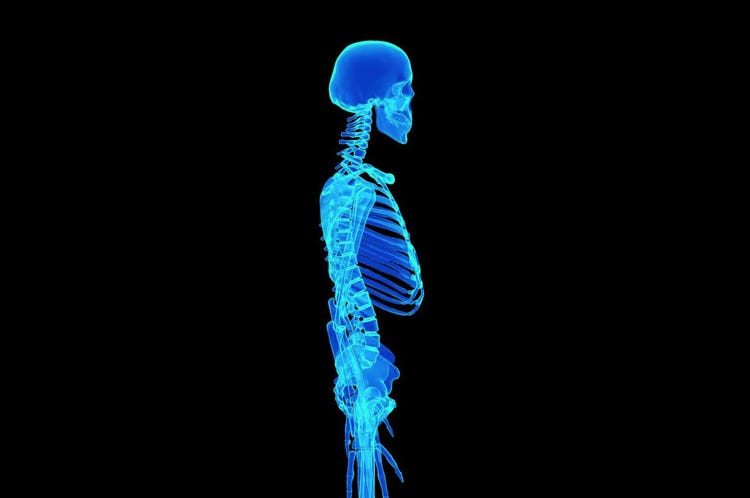The Posture Plumb Line

Posture: for ballerinas, opera singers and military platoons, it seems effortless. For the rest of us, it is a vague consideration when we hear about text-neck and desk work. But, when we take a conscious approach to posture, it can be the source of a kind of transformation. The posture plumb line is an imaginary straight line from the top of the head to the floor. Perfect posture means our ears, shoulders, hips, knees and ankles stack up along this line. Healthy posture is not quite the same thing. More often than not, people exhibit small structural differences from the anatomy textbooks. Our age, height and weight also contribute to differences in posture that don’t negatively affect our health. However, we do need to watch for significant deviations from the plumb line such as:
- Cervical lordosis (forward head posture)
- Thoracic kyphosis (hunchback)
- Lumbar lordosis (exaggerated curve in the low back)
- Flat back (this happens when the low back has too little curvature).
These deviations restrict our movement and contribute to injury and health decay.
POSTURE IS POTENTIAL
We usually study and train posture when still, but from a health perspective, posture is important because it offers us the maximum potential for movement. Perhaps not surprisingly, a builder’s plumb line (a long string with a weight on one end) makes the best analogy. If we hold the string and let the weight drop, it hangs in a straight line from our hand to the ground, and has the potential to move in any direction. The same is true in our bodies. When we stand with healthy posture, our spine is ready to move in many directions:
- Bending forward (flexion or extension)
- Bending side to side (lateral flexion)
- Rotating and twisting to the left or right.
It can even combine these movements, like the bending and twisting required to reach into a low cupboard or under a bed. With healthy posture, any of these movements are possible. Back to our plumb weight for a moment. Let’s say the weight has swung as far out to the left as it can, and we can freeze time for a moment to look at it. What movement possibilities does the weight have now?
- It can’t move any farther left.
- It will easily swing back to the right.
- Moving the weight to the forward or back position is possible, but will require an external force to push it there.
In this far left position, the weight has fewer and more difficult ways it can move. In the body, this is the challenge caused by poor posture: joints are stuck at one extreme of their range of motion, restricting the ways and ease of our movement. This is a problem not only because we like to move, so we can do the things we need and want to do, but because moving is critical for good health and longevity.
HOW DO WE GET STUCK?
When we chronically use one body position for long stretches of time, we are telling our bodies that it is important, and the body works to make it a strong position. Text-neck is the ideal posture if we only want to look at our laps and type on a phone, but it isn’t an ideal posture if we’d like to get out on the golf course this spring, or walk to the park pain-free. When our posture is poor, we can’t move as much. When we don’t move often enough, our posture gets worse. It is a frustrating little cycle. So what can we do?
Move Often
Make changing position a regular part of your day. Some people walk to the farthest washroom or water fountain on mini-breaks. Others use desks that move from sitting to standing. The more variety we can put into our bodies, the less restricted we’ll be.
Go Mobile
It’s a reality of modern life — we need ways to improve our joint range of motion in our feet, ankles, hips and spine. In-gym mobility sessions are a great start, but we can include basic mobility hygiene, like the strategies below, in our workdays too.
1. Vertical and Horizontal Awareness:
We like to think tall, imagining our spine lengthening out from the top of our heads and the tailbone. Next, we imagine our shoulders stretching out to our sides, as if we had someone pulling on either one. These simple techniques work to create a little space for our joints, improving the potential for movement.
2. Breathe Deeply:
Deep breaths and thoracic spine mobility go hand in hand. The diaphragm muscle requires our ribcage to expand as we breathe.